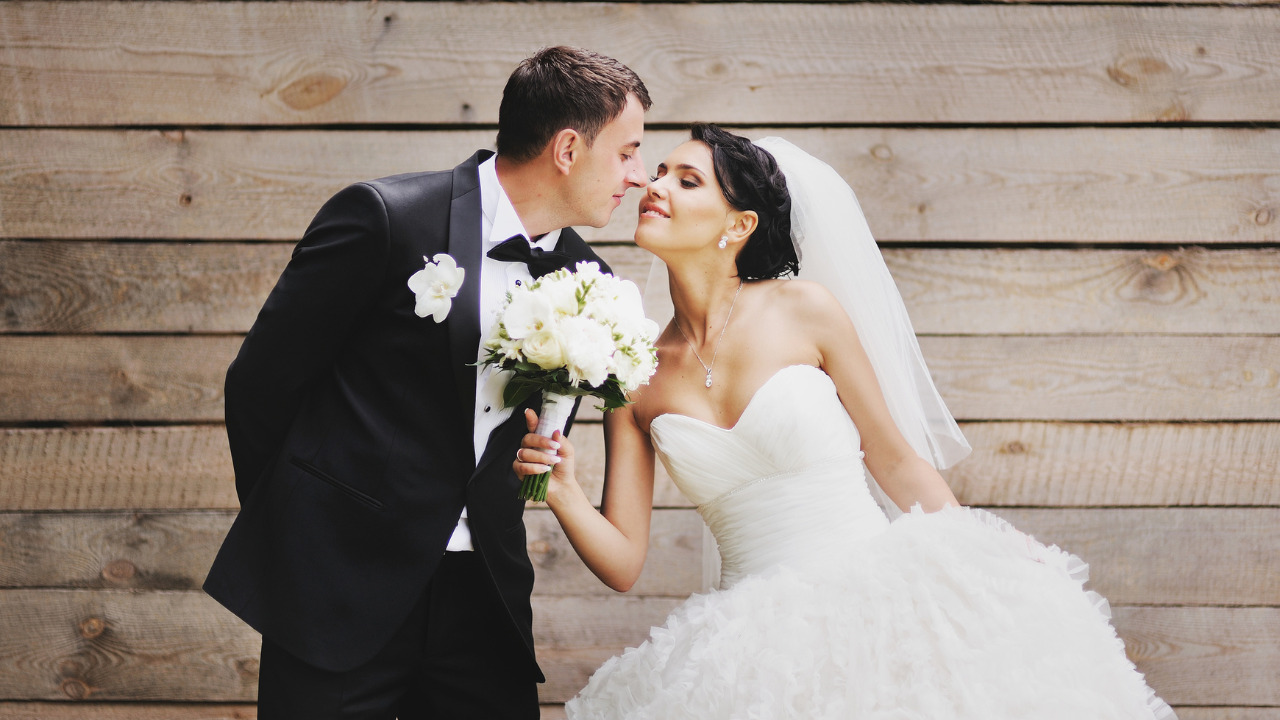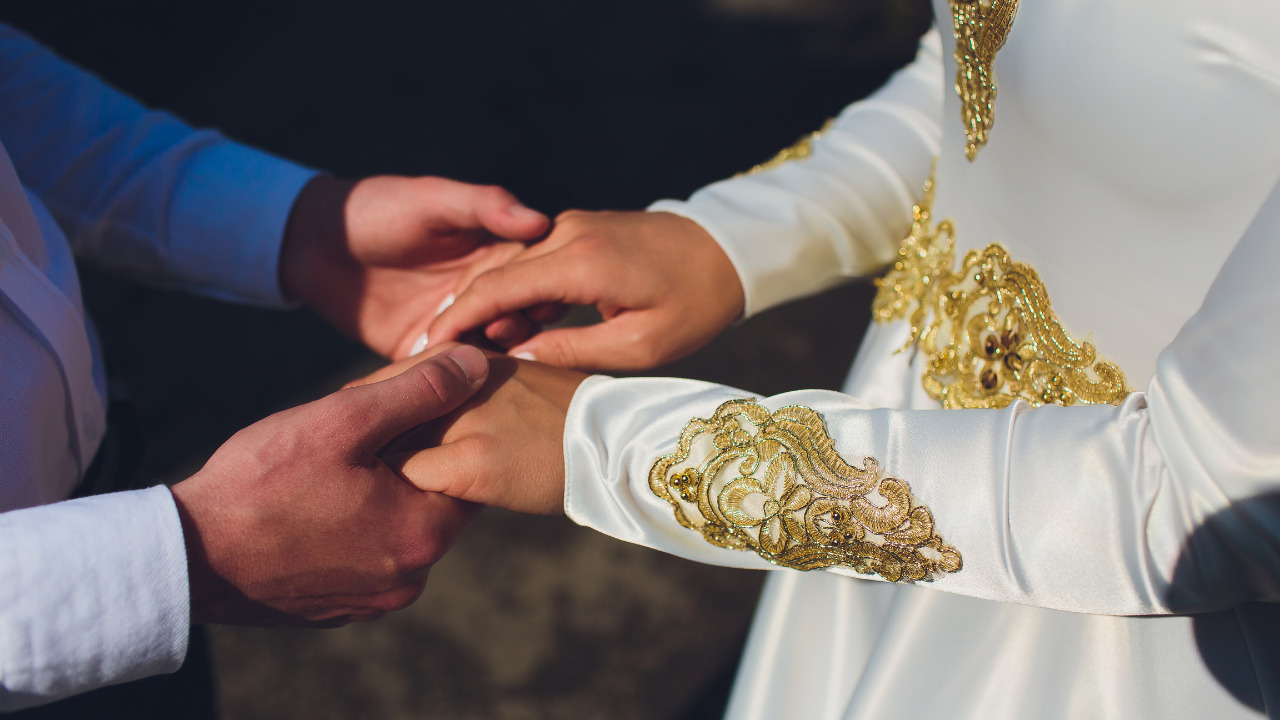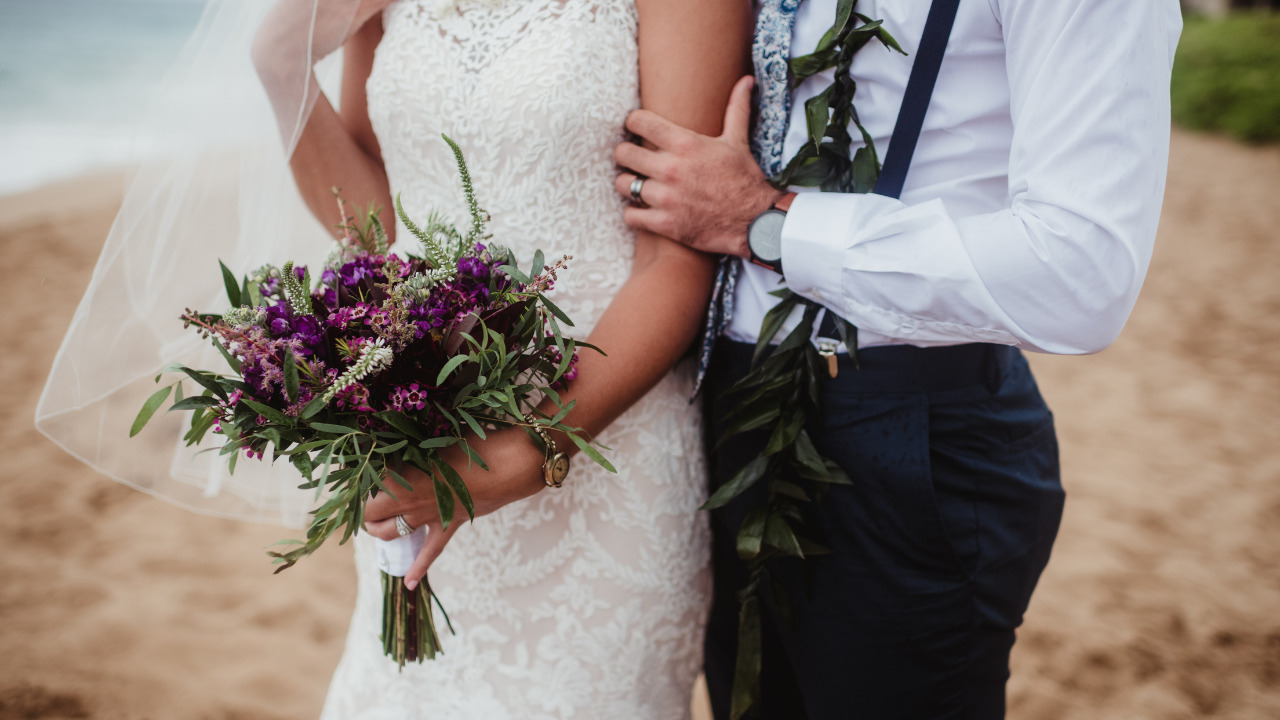In magical northern New Mexico, sprawling sunsets set the sky ablaze in the colors of burning embers, and the smoky-sweet scent of cedar, mesquite, and pinon pine perfumes the air. Santa Fe, the state capitol, and the smaller city of Taos near the Sangre de Cristo Mountains and Rio Grande Gorge to the northeast, are highlights of the juniper- and sage-dotted landscape. Both offer earthy, sensual honeymoon idylls, but each has a proud, distinct personality all its own.
By no means big, Santa Fe is larger and more cosmopolitan than mellow and charming Taos. Both boast their share of bohemians, cowboys, artists, writers, and big-city dropouts who have been drawn to this beautiful area for inspiration and escape. If you’re looking for a dose of quiet space and fresh mountain air, Taos is the ideal honeymoon spot, while Santa Fe offers the bigger city attractions of more art galleries, museums, and restaurants.
In a Word: Art
The awesome natural scenery and colorful customs of Native American culture have fueled the fires of a century’s worth of artists, including Georgia O’Keeffe, Frieda Kahlo, Ansel Adams, R.C. Gorman, and Nicolai Fechin. Most striking is how prevalent art is here: Not relegated to works of canvas and bronze in galleries and museums, art is everywhere, from the strings of red chiles (called ristras) that adorn earth-hued adobe homes to street-corner sculptures to the dramatic silver-and-turquoise jewelry worn by residents.
Each town has a central, centuries-old plaza, its historic heart, where the concentration of galleries can be found in Taos, which has been an artist colony for more than 100 years. Santa Fe joined the art scene later but has since become one of the world’s top stops for international exhibits and southwestern antiques. Its downtown plaza area offers some galleries and interesting sites — check out the colorfully painted windows, murals, and hand-crafted furniture and fixtures in the historic La Fonda Hotel — but its claim to fame is the mile-long Canyon Road, where more than 80 galleries, some in historic adobe homes, compete for your attention.
Don’t Miss
- Native American culture: More than 400 years ago, gold-mad Spanish Conquistadors discovered this area of New Mexico and, in 1692, many battles and retreats later, succeeded in colonizing land that Native American Indians had inhabited for more than 1,000 years. Today, little more than eight Native American pueblos (“villages”) are located near Taos and Santa Fe, but the soulful presence of their people infuses the entire area. Their peaceful resilience and quiet dignity is a triumphant example of faith and unity. On the surface, you’ll get a taste of the culture at shops that sell symbolic Navajo weavings, pottery decorated with petroglyphs, pueblo drums, rain dance rattles, beaded belts, and feathered dream catchers. For a deeper understanding, visit a pueblo. Of special note is the Taos Pueblo, a UNESCO World Heritage site. Note: Native Americans are understandably guarded about their traditions and private homes. Respect all photography restrictions and “off limits” areas when visiting.
- Outdoor sport: Every season offers ample opportunities to rev up your adrenaline on the trail, river, or slopes. During the warm summer and bumper months of spring and fall, camping, hiking, rock climbing, mountain biking, whitewater rafting, kayaking, llama trekking, and horseback riding in the nearby Carson and Santa Fe National Forests; the Pecos and Wheeler Park Wilderness Areas; or the Bandelier National Monument are all pursuits. For a great view without all the hoofin’, snuggle aboard a romantic hot-air balloon or just-the-two-of-you ski chairlift. The winter rules in northern New Mexico, where you can ski, snowboard, snowshoe, sled, and snowmobile. Taos Ski Valley is the crowned jewel of the area with 1,100 acres of blissfully uncrowded, challenging ski trails and slopes, a top-ranked ski school for all ages, distractingly stunning vistas, and an average of 300-plus inches of snow every year. Red River, Enchanted Forest, and Angel Fire are also near Taos, and allow snowboarding.
Knot Note: The altitude at the ski areas — more than 9,000 feet — can work a number on your lungs (and put a damper on your honeymoon). To acclimate — and avoid headaches, fatigue, and shortness of breath — spend a few days at a lower elevation (either Taos or Santa Fe, for instance) and go easy on those hot toddies. Once elevated, wear sunscreen and up both your carb and water intake. If plain ol’ wiping out on the slopes is ailing you, sink into Ojo Caliente Mineral Springs, a natural hot springs with a unique combination of five kinds of geothermal waters. (A follow-up massage from your honey also helps.) - Museums & storytelling: Art and history turn you on? In Taos, don’t miss La Hacienda de los Martinez, a 21-room Spanish Colonial great house built in 1804; the cozy and beautiful Millicent Rogers Museum (beware the temptations of its well-stocked arts-and-crafts gift shop!); the Harwood Museum of Art; and the Fechin Institute, a home filled with paintings and hand-carved furniture lovingly created by the Russian artist who once lived there. Cross the street to visit an antique door dealer and The Gypsy Tea Room, a boudoir-like “enchantments” shop. In Santa Fe, the options are almost too many for a newlywed’s limited attention span (art, kiss, art, margarita, art, margarita, kiss, kiss, kiss…): the Museum of Fine Arts exhibits late 19th-century and present-day works by famed Southwestern artists; the Institute of American Indian Arts Museum features contemporary Indian Arts; and the Georgia O’Keeffe Museum displays a collection of this preeminent artist’s work. Also check out the Museum of Indian Arts and Culture, the Museum of International Folk Art, and the Wheelwright Museum of the American Indian.
Best Place to Kiss
Gaze at the Sangre de Cristo Mountains or a starry sky from a private outdoor hot tub at Ten Thousand Waves, a tranquil Japanese health spa in Santa Fe. Blissed out? Follow a soak with a couples’ hot stone or oil massage and then float over to one of eight cozy houses, each with a wood-burning fireplace, to drift into dream.
Click here to preview your posts with PRO themes ››
When to Go
- Best weather: May through October, but the “best” season depends on your favorite sport. Note that temperatures can vary up to 30 degrees over the course of your visit anytime of the year
- Best prices: January to February; peak season is July to November
- Festival highlights: Winter Wine Festival features wine and food events at the end of January in the Taos Ski Valley; Taos Spring (May) and Fall (late September to late October) art festivals; Taos Poetry Circus the second week of June; “Wings Over Angel Fire” hot-air balloon festival the third weekend in July; Festival Santa Fe features music, theater, and dance and the Santa Fe Plaza Arts & Crafts Festival (including the Indian Market in mid August) runs from June to August; Santa Fe Fiesta, featuring parades, performances, and an arts-and-crafts market to commemorate the return of the Spanish during the first week of September; the Burning of Zozobra in early September; and the Taos Mountain Balloon Rally during the last weekend of October.




